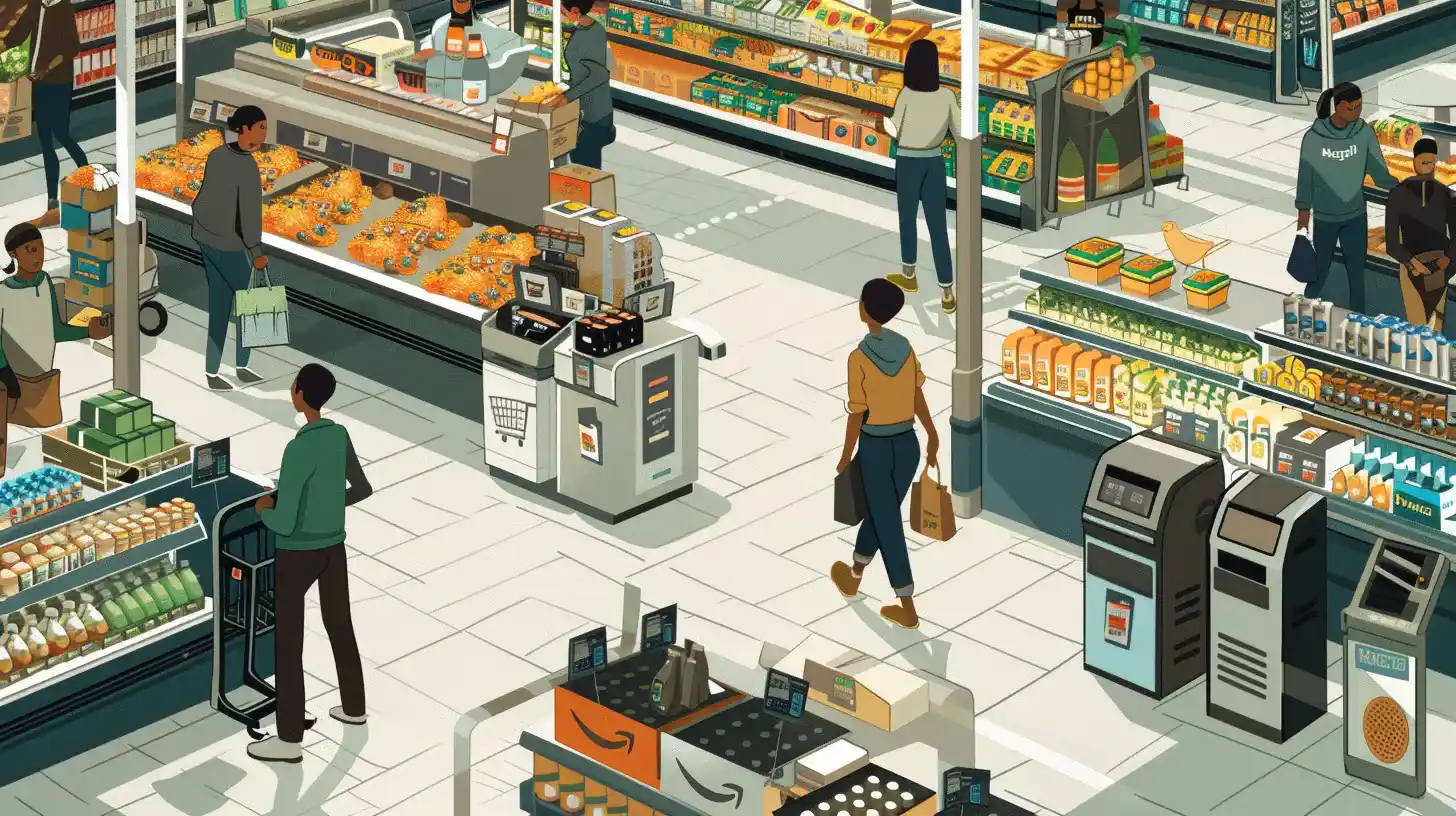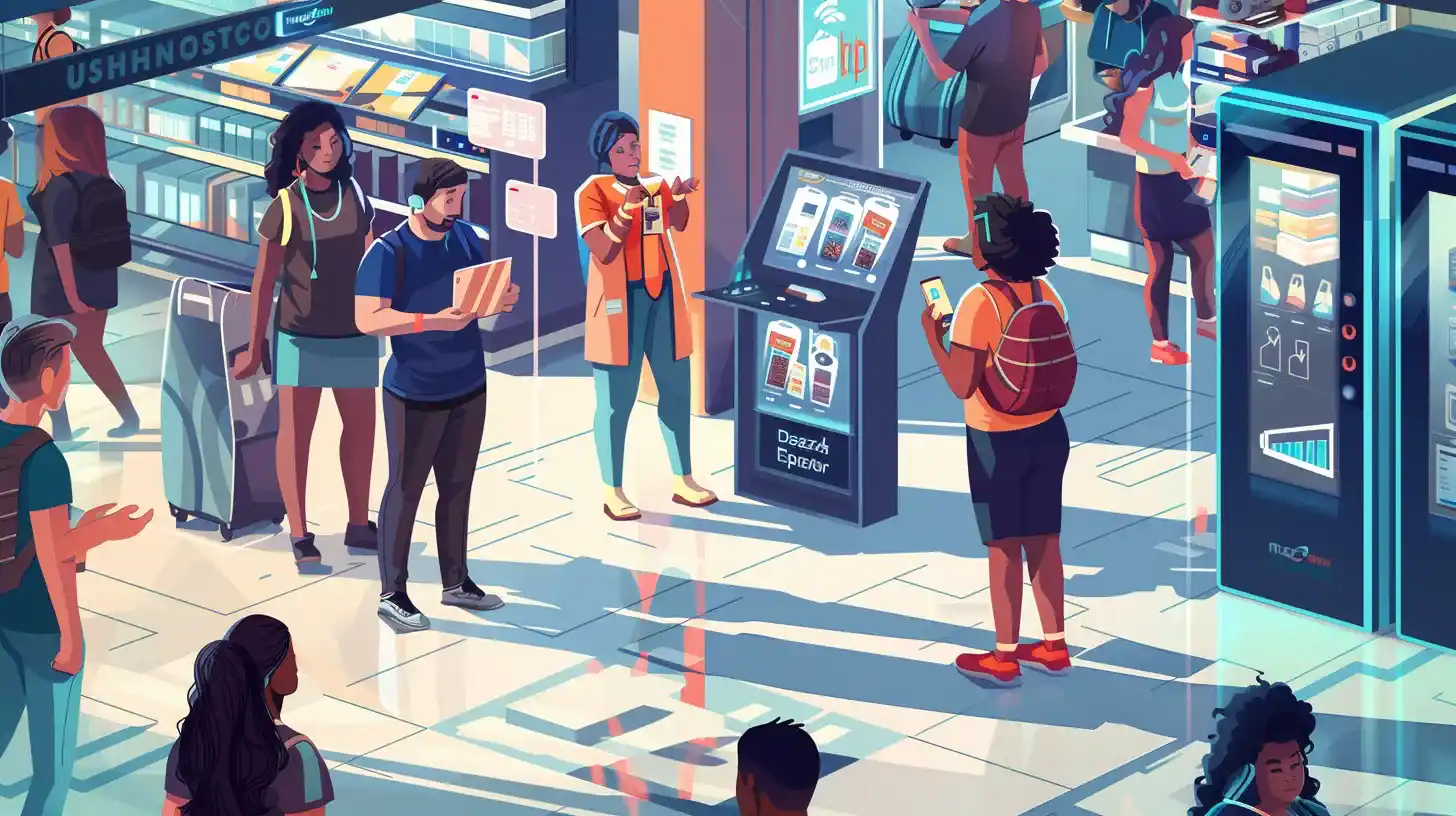Table of Contents
In a strategic move to enhance the shopping experience, Amazon has opted to discontinue its Just Walk Out program, transitioning instead to the Amazon Dash Cart system. This decision marks a significant shift in the retail giant’s approach towards in-store checkout processes.
The move, as reported by The Information, signifies Amazon’s endeavor to revamp its brick-and-mortar grocery stores, pivoting towards more streamlined methods such as the Dash Cart. The Dash Cart allows customers to scan products as they add them to their cart, facilitating a hassle-free shopping experience.
Embracing Innovation with Amazon Dash Cart
Despite its acquisition of Whole Foods in 2017, Amazon Dash Cart has struggled to establish a strong foothold in the realm of in-person retail. With the discontinuation of various store formats such as Books, 4-Star, Pop-up stores, and drive-up grocery stores, Amazon is now doubling down on its efforts to refine the shopping experience with the Dash Cart.
The Amazon Dash Cart integrates seamlessly into the shopping process, enabling customers to scan items using built-in cameras while they shop. This innovative approach aims to address the shortcomings of traditional self-checkout systems, offering a more efficient and user-friendly alternative.

Challenges and Benefits of Self-Checkout
While self-checkout technology has been in existence since the 1980s, its widespread adoption has been hindered by issues such as slow processing, unreliability, and impersonal interactions. Amazon’s shift towards the Dash Cart acknowledges these challenges while leveraging technological advancements to overcome them.
The utilization of radio-frequency identification (RFID) scanners and palm-scanning technology represents Amazon’s commitment to enhancing security and efficiency in the checkout process. By adopting a more streamlined approach, Amazon aims to improve overall customer satisfaction and drive increased purchasing.
Transitioning to Amazon Dash Cart
Jessica Martin, an Amazon spokesperson, highlighted the rationale behind the transition, emphasizing the company’s dedication to customer convenience. The Dash Cart not only eliminates the need for traditional checkout lines but also provides additional features such as real-time receipt viewing and access to nearby product deals.
The positive reception of the Dash Cart among customers underscores its potential to redefine the shopping experience. By offering a blend of convenience and innovation, Amazon aims to set a new standard for in-store retail operations.
Continued Evolution of Retail Technology
As Amazon continues to refine its Amazon Fresh stores, it remains committed to providing diverse checkout options tailored to individual preferences. Alongside the Dash Cart, Amazon is also introducing self-checkout and assisted checkout solutions, ensuring flexibility and convenience for all customers.

While the transition away from Just Walk Out may raise concerns among some shoppers, Amazon’s focus on enhancing the overall shopping experience remains unwavering. By embracing emerging technologies and customer-centric approaches, Amazon seeks to stay at the forefront of retail innovation.
Navigating Customer Feedback
While the transition to the Dash Cart has been largely positive, some customers have voiced concerns regarding the discontinuation of the Just Walk Out program. Issues such as entry gate accessibility and delayed receipt generation have been highlighted by certain shoppers, signaling the importance of addressing diverse consumer needs in the retail environment.
Amazon’s commitment to customer satisfaction is evident in its proactive approach to soliciting and incorporating feedback. By actively listening to customer concerns and iteratively refining its offerings, Amazon demonstrates its dedication to delivering exceptional shopping experiences.
Future Outlook
As Amazon continues to refine its in-store operations, the transition to the Dash Cart marks just one facet of its broader strategy to innovate and adapt to evolving consumer preferences. With an ever-expanding portfolio of retail solutions and a relentless focus on customer-centricity, Amazon is poised to reshape the future of brick-and-mortar retail.
The success of the Dash Cart underscores the significance of leveraging technology to streamline traditional retail processes. As retailers worldwide grapple with the challenges posed by a rapidly evolving industry landscape, Amazon serves as a beacon of innovation, paving the way for the next generation of retail experiences.
Conclusion
Amazon’s decision to embrace the Amazon Dash Cart represents a significant milestone in its pursuit of redefining the retail landscape. With a renewed focus on customer convenience and efficiency, Amazon is poised to set new benchmarks for in-store shopping experiences. As the retail industry continues to evolve, Amazon remains at the forefront, leveraging technology to shape the future of retail.